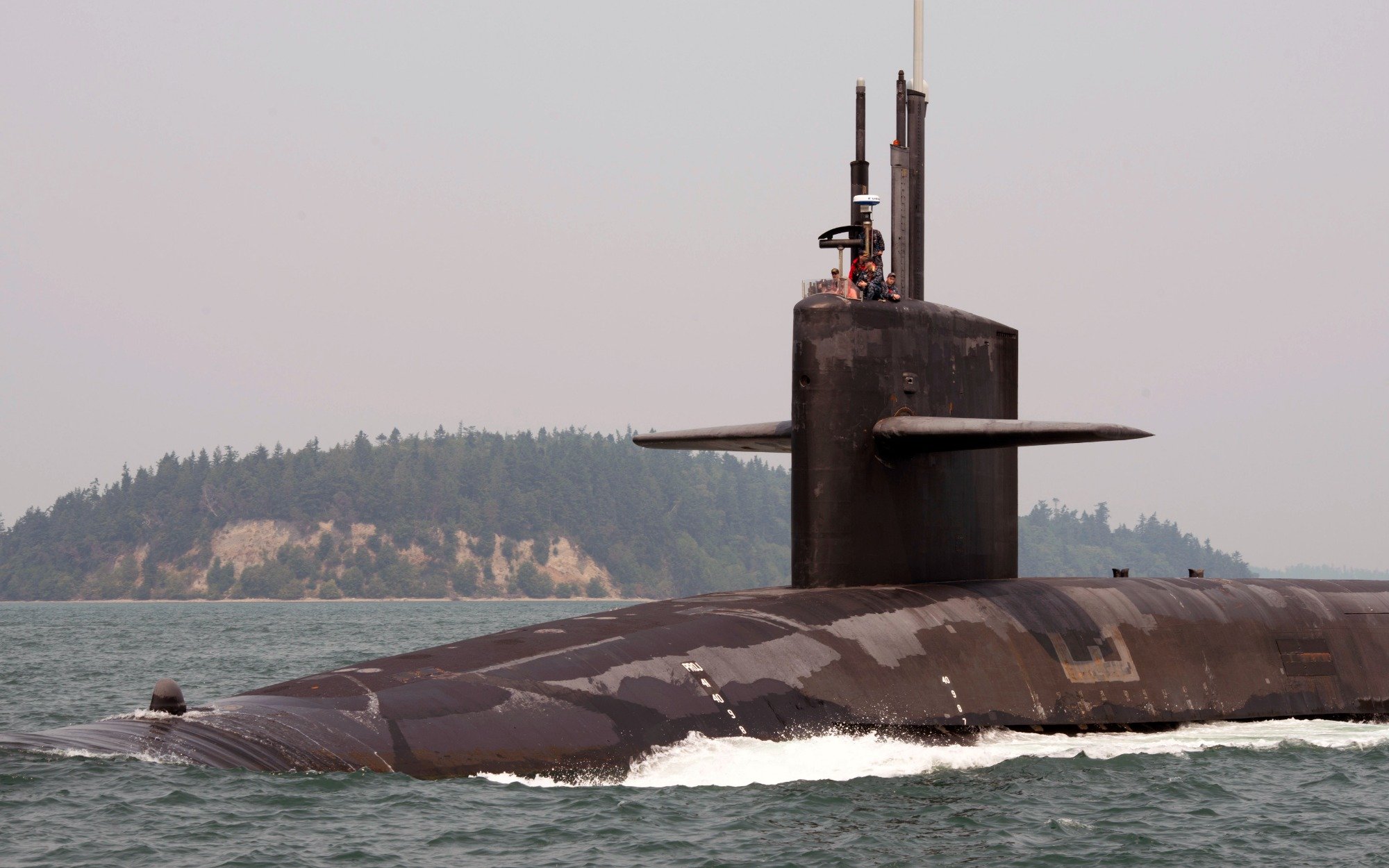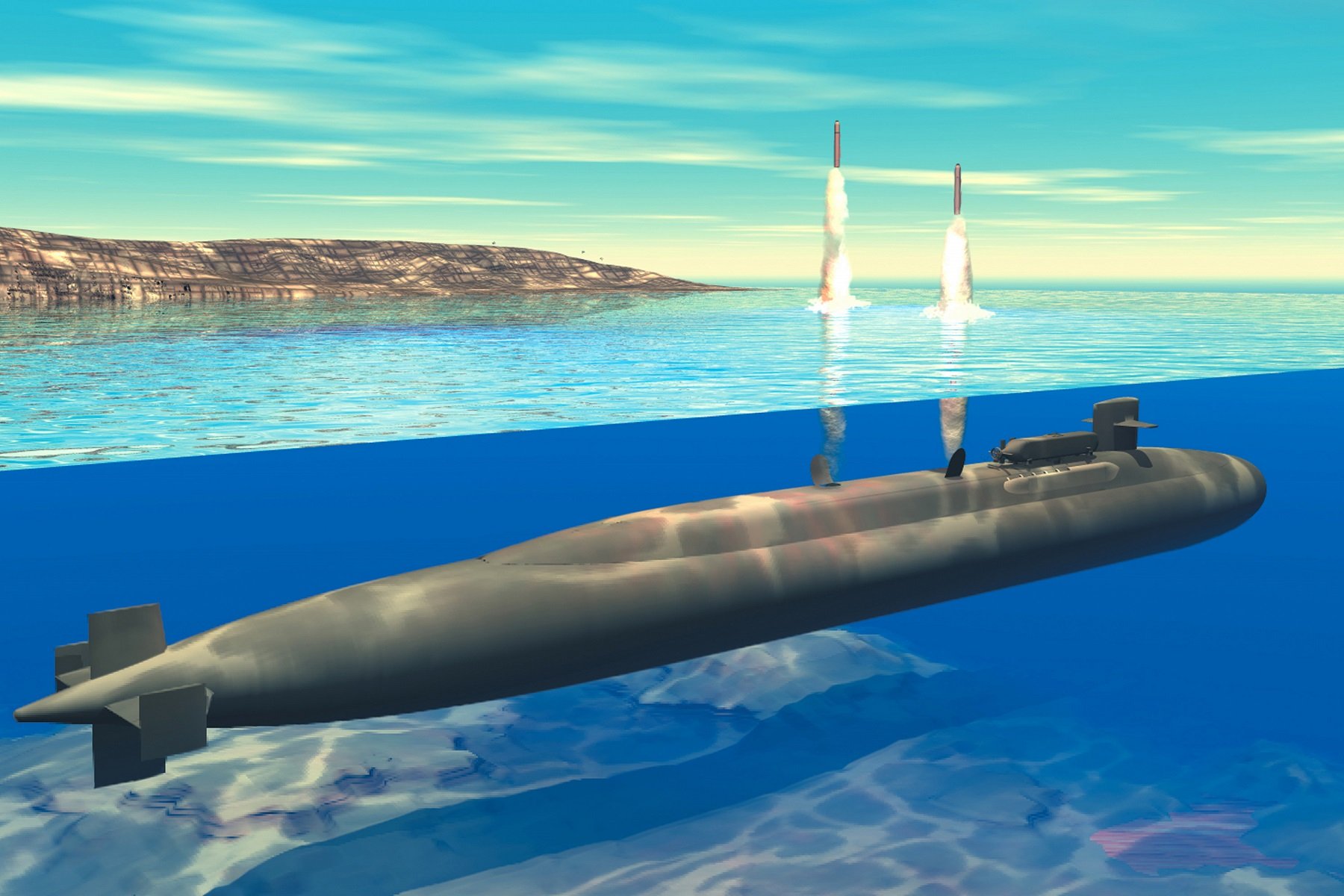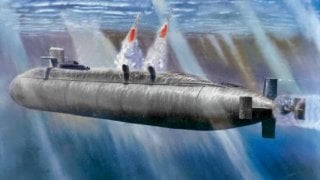The U.S. Navy's Ohio-Class Submarine Is a Real Underwater Powerhouse
The Ohio-class submarines now come in both an SSBN - or nuclear missile version - as well as a SSGN version that fires cruise missiles.
Summary and Key Points: Commissioned in 1981, the USS Ohio (SSBN-726) marked a significant advancement in the U.S. Navy's strategic deterrence, being the first of eighteen nuclear-powered Ohio-class submarines. Initially equipped with Trident C4 missiles, later boats carried the advanced Trident D5.

-The Ohio-class offered improvements in speed, stealth, and maintenance over previous classes. With capabilities to carry 24 missiles and featuring advanced sonar and weapon systems, these submarines became integral to the U.S. nuclear deterrent.
-Despite entering service in the Reagan era, the Ohio-class remains vital, with life extensions planned to ensure operational readiness until their replacements are fully deployed.
USS Ohio: The Game-Changing Submarine of the U.S. Navy
When the USS Ohio (SSBN-726) was commissioned in 1981, the nuclear ballistic submarine was heralded by then-Vice President George H.W. Bush as providing "a new dimension in our nation's strategic deterrence." The submarine, which had been laid down five years earlier, was the first in a new class of eighteen nuclear-powered SSBNs built for the United States Navy.
The first eight boats were delivered with Trident C4 missiles, while the fourteen to follow were armed with the longer-range Trident D5 – a weapon that has been touted as being as accurate as ground-based ICBMs and with the same response time and greater destructive effect.

Ohio-Class: Major Leap Forward
The Ohio-class has been seen as a major improvement over the previous Lafayette-class SSBNs, and the boats were faster, quieter, and easier to maintain. The crew facilities were also enhanced and included two onboard libraries and other amenities.
Until the deployment of the Soviet Union's mighty Typhoon-class, Ohio was the largest submarine in the world. The U.S. Navy's boats displaced 16,764 tons, were 560 feet (170 meters) in length and were 42 feet (13 meters) at the beam.
Made in Connecticut
The Ohio-class submarines were constructed between 1981 and 1997 by the Groton, Connecticut-based Electric Boat Division of General Dynamics. The U.S. Navy's submarines of the Pacific Fleet are currently based at Bangor, Washington, while those of the Atlantic Fleet is based at King's Bay, Georgia. The SSBNs were also developed to operate for fifteen years or longer between overhauls.
Doing More With Fewer Submarines
As each Ohio-class was able to carry twenty-four Trident missiles, compared to the sixteen carried by a Lafayette, the United States Navy was able to replace thirty-one of the former boats with just eighteen Ohio-class subs. Because there are fewer subs, the Navy works hard to ensure that each is at sea as much as possible.
During deployment, the submarines spend approximately seventy days at sea, followed by twenty-five days in the dock for overhaul. Each of the SSBNs spends at least sixty-six percent of the time at sea.

To reduce the time in port for crew turnover and replenishment, the submarines were built with three large logistics hatches – and these provide large-diameter supply and repair openings. The hatches allow the sailors to rapidly transfer supply pallets, equipment replacement modules, and other mechanical components quickly.
Two Crews
Each of the SSBNs has two crews – "Blue" and "Gold" – which alternate manning the boats while on patrol. The two sets of crews each consist of fifteen officers, including its own captain, and one hundred forty four enlisted sailors. This further maximizes the SSBN's strategic availability while reducing the number of boats that are required to meet the strategic requirements and yet allow for proper crew training, readiness and morale.
Under Pressure
The Ohio-class submarines feature a streamlined outer hull that enables the boat to move silently through the water at high speed, while the interior pressure hull provides an area that is large enough to accommodate the weapons, crew, and equipment.
Each of the submarines are powered by a GE S8G pressure water reactor with two turbines that provide 45 MW (60,000 shp), which drive a single shaft. The boats are able to maintain a top speed of 18 knots when surfaced and 25 knots submerged.
The Ohio-class was also designed with four 533mm (21-inch) torpedo tubs with a Mk 118 digital torpedo fire control systems and armed with Gould Mk 48s, a heavyweight weapon with a 640 pound (290 kg) warhead.
The boats were also designed to carry an advanced sonar suite that included the IBM BQQ 6 passive search sonar, Raytheon BQS 13, BQS 15 active and passive high-frequency sonar, and an active Raytheon BQR 19 navigation sonar.
A Big Change for the Ohio-Class
Per the Strategic Arms Reduction Treaty (START II), which was agreed in June 1992, the number of U.S. Navy strategic missile submarines was limited to fourteen beginning in 2002. Four of the boats of the Ohio-class – including the lead boat – were converted to conventionally-armed nuclear-powered (SSGNs) submarines.
USS Ohio began the conversion in November 2002 and rejoined the fleet in January 2006, following her sea trials. The other converted boats of the class included USS Michigan (SSGN-727), USS Florida (SSGN-728), and USS Georgia (SSGN-729).

Sticking Around
Despite entering service in the Reagan era, the Ohio-class remains a crucial component of the United States nuclear deterrent triad.
In November 2020, the U.S. Navy announced that it was looking at extending the lives of the Ohio-class submarines again – beyond the now 42-year planned life for the SSBNs – to add a little more capability for combatant commanders and a little more cushion in case of delays fielding their replacement.
Expert Biography
Peter Suciu is a Michigan-based writer who has contributed to more than four dozen magazines, newspapers and websites. He regularly writes about military hardware, and is the author of several books on military headgear including A Gallery of Military Headdress, which is available on Amazon.com. Peter is also a Contributing Writer for Forbes.
All images are Creative Commons.


